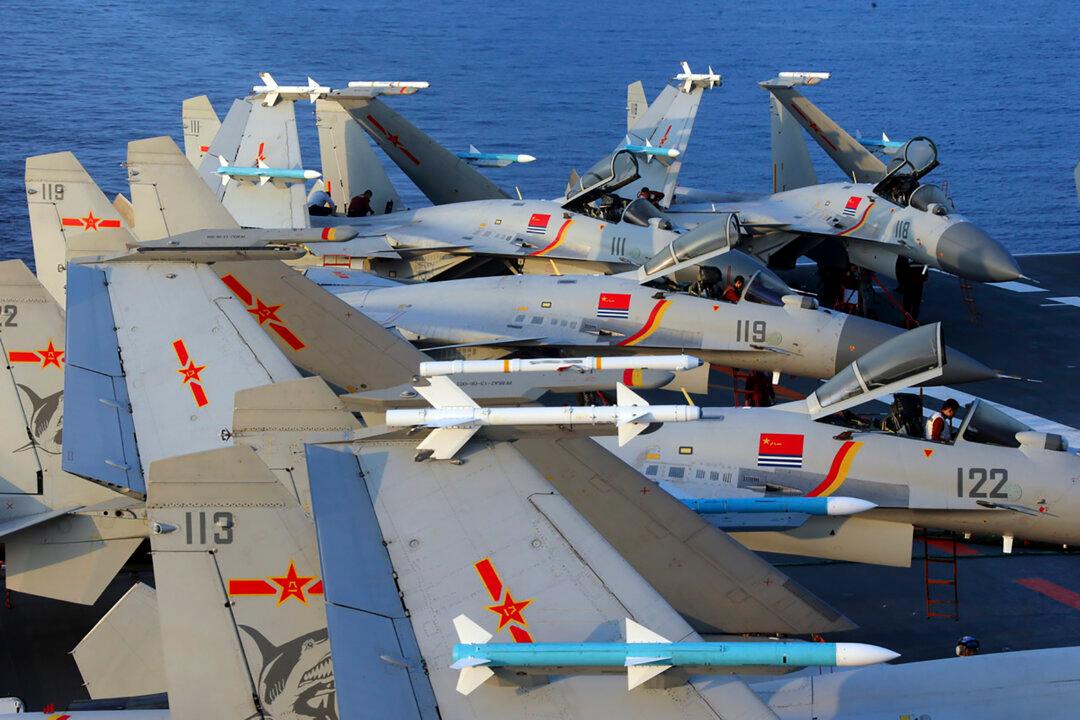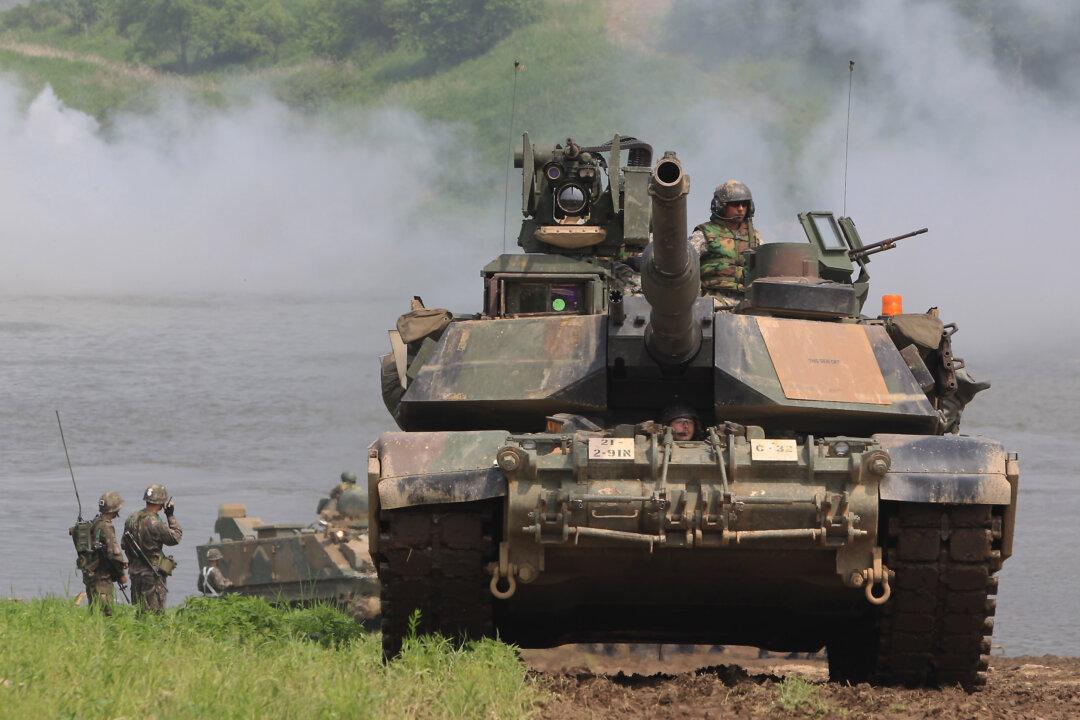China’s People’s Liberation Army (PLA) bombers are likely training for strikes against the United States and its allies, and a massive fleet of maritime militia that’s controlled by Beijing is being used to support the regime’s aggression in the South China Sea and beyond, according to a new Pentagon report on the Chinese regime’s military capabilities.
The 2018 annual report to Congress on China’s military and security developments estimates that Beijing spent $190 billion on the military in 2017 alone, an increase from last year’s estimate of $180 billion, even as China’s GDP growth has stalled.




